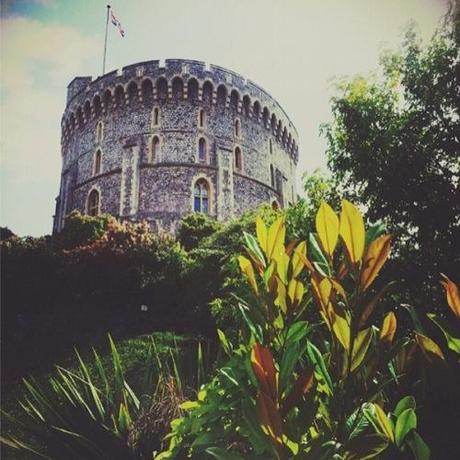
Photo: Melanie Clegg.
When I posted the other day about my forthcoming fortieth birthday (eek!), many of you expressed astonishment that I had ‘visit Windsor Castle’ on my Things To Do Before I Turn Forty List. Which is fair enough – after all, I am a history blogger and have been resident in the UK for my entire life so far so how come I’ve never managed to visit?
The thing is that I HAD actually been to Windsor Castle before. Well, sort of. I spent a lovely afternoon in the private bit of the estate, near Frogmore House, there a couple of years ago with my former university tutor, the utterly amazing Desmond Shawe-Taylor, the Surveyor of the Queen’s Pictures but the actual castle itself was alas not on our agenda. Clearly something had to be done about this though and I am massively grateful to the press team at the Royal Collection for making this glaring omission on my List Of Woe finally happen.
Yes, that’s right. I have now BEEN TO WINDSOR CASTLE and I have pictures to prove it. Many, many pictures. Mostly of the iconic round tower and the outside of St George’s Chapel because UNLIKE CERTAIN OTHER VISITORS (I’m looking at YOU, French tourist guy who wandered about taking blatant photos with YOUR IPAD) I didn’t take photos inside despite it being expressly forbidden.
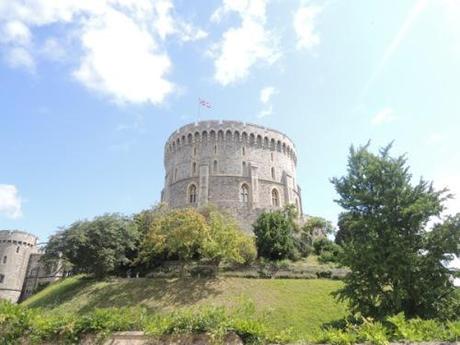
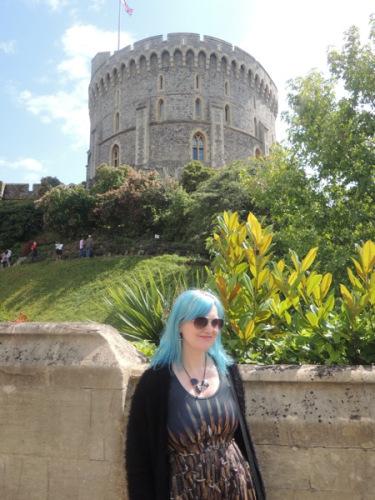
Awful photo. AMAZING DRESS. Also CASTLE. #windsoriscoming
Anyway! After one of my now legendary early starts because all the cool stuff is on the other side of the country to the one I live in, we headed off to Windsor for a day of HISTORY and ART. Fashion fans may like to know that I opted to wear my amazing Iron Throne dress from the Game of Thrones collection by Black Milk Clothing for the occasion because, seriously, what could be more appropriate? NOTHING, that’s what. NOTHING. Although this did lead to an overuse of the #windsoriscoming hashtag on Twitter and Instagram. Windsor is Coming. Winter is Coming? Windsor? Winter? Get it? No? Okay, moving on…
Excitement began to mount when we caught the usual glimpse of the castle looking all iconic and like it should be starring in a montage of GREAT BRITISH STUFF! from the motorway. It really is amazing, although close to it’s rather less forbidding looking than the likes of Warwick and Alnwick Castles, which still recall their links to more brutal times, whereas Windsor has an altogether more domestic feel although it too has had its moments of drama over the centuries – with a couple of sieges, some royal prisoners and all manner of strife and iniquity as well as the usual births, marriages and deaths, with probably the most famous being that of Prince Albert, who died at Windsor Castle in December 1861.
Windsor Castle has been a favorite residence of the royal family since the times of Henry I and the building has obviously changed enormously over the centuries to accommodate different tastes and requirements. Nowadays, although the exterior of the castle retains a picturesque Medieval flavour, the interiors instead recall the lavish tastes of much later generations, with a distinct lean towards the rather fussy Victorian take on ‘Medieval’ furnishings and patterns as well as George IV’s extremely opulent refurbishments.
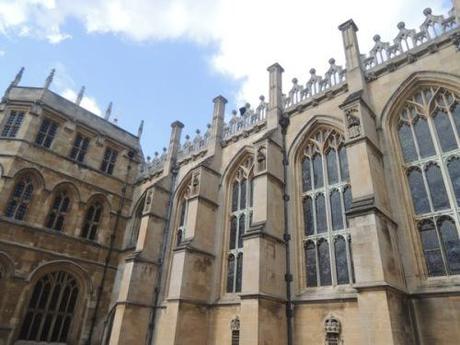


St George’s Chapel exterior. Photos: Melanie Clegg.
Once we’d made it past security so stringent that it was almost as if we were going to get in the castle and fly somewhere in it, we headed straight off for a look at St George’s Chapel, which, in its present incarnation, was started by Edward IV in 1475 and was finally completed by his grandson, Henry VIII in 1528. Although I knew that the chapel was the last resting place of Henry VIII, Jane Seymour, Charles I and Princess Charlotte, I was actually, to my shame, astonished by how many royal burials have taken place there over the years and wandered about in a bit of a daze, hardly able to believe that I was seeing WITH MY OWN EYES the final resting places of Edward IV and Elizabeth Woodville and, nearby, poor old Henry VI (his wife Marguerite was buried alongside her father in Angers Cathedral in France) as well as Charles Brandon, although his wives, including Mary Tudor are buried elsewhere. Harsh.
There are also superb effigies on the tombs of Edward VII and Queen Alexandra and George V and Queen Mary, all of whom are commemorated here with a great deal of pomp and swagger. In contrast, the side chapel devoted to George VI, Queen Elizabeth and their daughter, Princess Margaret is much more simple and modern. In fact, I wondered if Princess Margaret’s beautiful memorial was designed by her son, Lord Linley but it was in fact designed by Richard Kindersley.
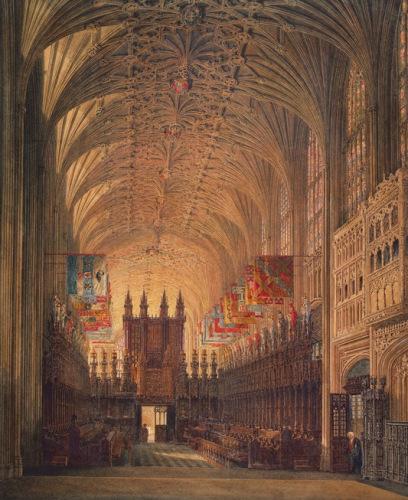
St George’s Chapel, Windsor, Charles Wild. Photo: Royal Collection Trust/© Her Majesty Queen Elizabeth II 2014.
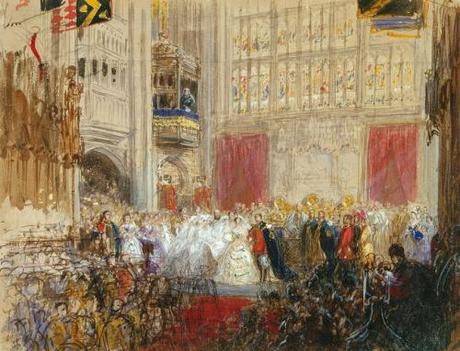
Sketch for the painting of ‘The Marriage of the Prince and Princess of Wales’ at St George’s Chapel, Windsor, Housman Thomas, 1863. Photo: Royal Collection Trust/© Her Majesty Queen Elizabeth II 2014.
It really is the most astonishing building, with a pair of really beautiful little Medieval chantry chapels as well as that remarkable fan vaulted ceiling over the fifteenth century Quire, which makes for a most suitable setting for the final resting place of Henry VIII, Jane Seymour and Charles I. It was actually really odd to be able to walk over the entrance to their vaults – it felt like an extreme act of lèse majesté. I was also fascinated by the Garter stall plates, which are fastened to each stall by the member of the Order of the Garter who has its use during ceremonies. Traditionally, although there is a ceremony to mark the death of each knight and his leaving of the order, the plate remains fixed in place so that each stall is decorated with a collection of plates, some of which date from the fourteenth century onwards so there are plates that would have belonged to John of Gaunt, Henry ‘Hotspur’ Percy, Henry V, Richard ‘Kingmaker’ Neville, Richard III, Edward V and his brother, Ferdinand of Aragon, Thomas Boleyn, Thomas Cromwell and on and on. Completely fascinating and what a brilliant piece of ongoing history.
Elsewhere in the chapel is the royal vault with the remains of George III, Queen Charlotte, George IV, William IV, Queen Adelaide and much of the Hanoverian family. It need not be pointed out, I expect, that Queen Caroline rests elsewhere.
On the way out, we took a peek in at the Albert Memorial Chapel, which was created by Sir George Gilbert Scott for Queen Victoria and which houses a lovely white marble effigy of Prince Albert as well as a rather dramatic black one for Prince Albert Victor, Duke of Clarence, which was SO goth and over the top that it reminded me of something from Penny Dreadful. Way to convince people that he wasn’t Jack the Ripper, guys. I’m JOKING. We all know that’s a load of all cobblers but STILL.
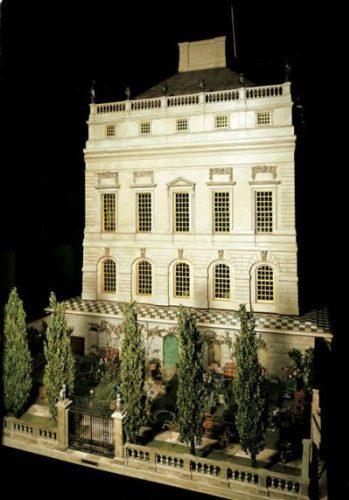
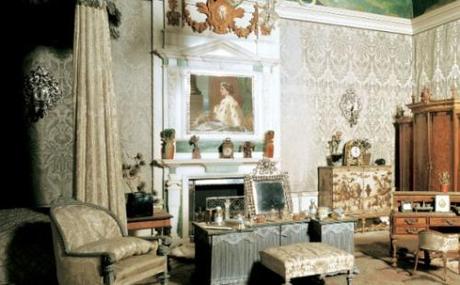

Queen Mary’s Dolls House. Photo: Royal Collection Trust/© Her Majesty Queen Elizabeth II 2014.
Anyway, we marched on to the state apartments after this, where we opted for the much longer queue that included a look at Queen Mary’s Dolls House, which is an absolute MUST SEE quite frankly. My husband looked wistfully at all the people bypassing the dolls house and walking straight into the state apartments and even wondered out loud a few times if it was really worth such an epic wait. YES, I kept telling him. JUST WAIT AND SEE. I was right of course and afterwards he agreed that the dolls house was in fact something of a highlight for him. I mean, come on, don’t we ALL love miniature things?
I felt sad explaining to my boys that the house and its contents had never actually been played with by any children though. You can totally see why – it’s as exquisite as any jewel, but you could see them standing there thinking ‘BUT… BUT… LET ME AT IT’. However, I do know that Queen Mary had a bit of a sneaky play with it when it was first delivered and who can blame her? Although it was intended as a very special present from the people for the notoriously bijoux loving Queen, it was also designed to showcase the very best goods of the time and also stand as a tangible record of the sort of lifestyle that royals enjoyed at the time. When it was put on display at the British Empire Exhibition in the mid 1920s, apparently more than 1.6 million people came to view it and it is just as popular today. If you want to read more about the doll’s house then I have a post ALL ABOUT IT right here.
After this, we popped our heads in to the special and rather fascinating exhibition of documents from the royal archives but were mostly determined to steam onwards to the state apartments to get our fill of GILT AND GLORY. Although there is the same underlying taste behind the decors of both Buckingham Palace and Windsor Castle, there is very definitely a rather different feel going on between the two with the former being altogether, I thought, more feminine and actually BEAUTIFUL, while Windsor Castle is altogether GRANDER and has a more military and masculine feel with darker woods, heavier fabrics and lots of displays of arms about the place. Out of the two though, I think I would rather live in Buckingham Palace. I wonder which one the Queen likes best?
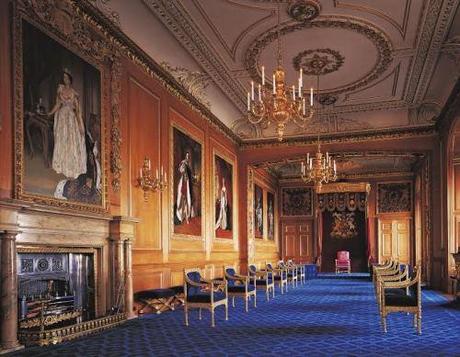
Garter Throne Room. Photo: Mark Fiennes.
Anyway, all of this aside, the state apartments at Windsor Castle do NOT disappoint and really offer the most amazing showcase of just how astonishing the royal art collection actually is with rooms filled with paintings, mostly portraits, by Van Dyck, Holbein, Rubens, Lawrence, Bronzino, Rembrandt and more. As with Buckingham Palace, it is a massive treat for any history enthusiast to see such well known and even in some cases iconic (Princess Elizabeth Tudor in her pink dress, staring out warily at the viewer) paintings in their usual setting. In fact, just to SEE them in actual person rather than in a book is treat enough. Completely amazing and actually pretty moving too.
The tour of the state apartments starts with the grand staircase, an amazing gothic structure topped with a pair of fully armoured up knights mounted on chargers, which leads on to the grand vestibule, where the walls are covered in weaponry – an arrangement that was unsurprisingly designed for William IV, who was a bit keen on that sort of thing – although it is a huge statue of his brother, George IV looking particularly theatrical, that dominates the scene. Naturally.
After this there is the Waterloo Chamber, which was originally designed by Wyatville for George IV and created especially for the display of a series of Lawrence portraits, which he painted to commemorate the success of the allies at Waterloo and which depict many of the great and good connected with that auspicious event. They do make for a rather lovely display: the rich colours of the military uniforms contrasting most becomingly with the opulent faux gothic ceiling and sage green and gold of the decor. If some of the amazing wooden carvings bordering the walls look a bit church like, that’s because they were actually carved by Grinling Gibbons and his team in the 1680s and were originally made for the royal chapel.
Following the Waterloo Chamber, we took a stroll through the beautiful state apartments which were originally laid out and decorated in the finest baroque style for Charles II and Queen Catherine of Braganza in the late 1670s. They’ve undergone some changes since then but you can still see some of the original Grinling Gibbons carvings and all but three of the amazing Verrio painted ceilings celebrating Catherine of Braganza, which are reminiscent of his work at Hampton Court.
The first room is the King’s Drawing Room with its green silk walls and wonderful paintings by Rubens (although this identification is apparently doubtful in a few cases). It was here that George IV’s body lay in state after his death in 1830, although his niece Queen Victoria doesn’t seem to have been troubled by this macabre association as she later had a stage erected at one end and used it for private theatrical performances.
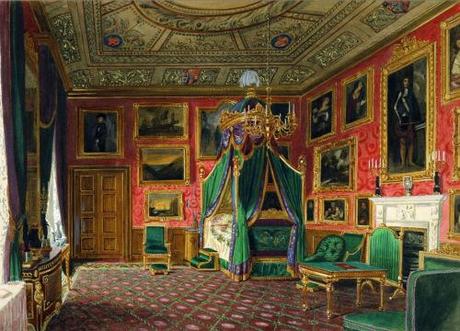
Windsor Castle: The King’s State Bedchamber, Roberts, 1855. Photo: Royal Collection Trust/© Her Majesty Queen Elizabeth II 2014. This painting shows the bedchamber in its new redecoration for the visit of the Emperor Napoléon III and Empress Eugènie.
Following this there is the King’s Bedchamber, which has a decidedly odd air with its masculine crimson silk walls and heavy gilt furniture, which make such a contrast to the extremely elaborate green and lilac swagged and feathered bed which was made for the visit of Napoléon III and the Empress Eugènie in 1855 – green and lilac being the Imperial colours. It’s a lovely room though and it was nice to have a bedroom on display as they’re pretty much always my favorite rooms in stately homes and I always feel a little bit cheated if I don’t see one. Yup, I’m a nosey one alright.
We then passed through two smaller rooms where the king had his all important dressing room and closet (where Charles II hung out with the infamous procurer extraordinaire William Chiffinch) and on to the Queen’s Drawing Room, which would have been the start of a gradually increasingly private suite of rooms allocated to Catherine of Braganza which would have included her bedchamber, closet and dressing room. Charles II may well have housed his mistresses around Windsor (the aristocratic Louise de Kéroualle had a suite of rooms immediately underneath him, while Nell Gwynn, perhaps predictably, was housed outside the castle precincts), but he still ensured that his wife had all the full and proper honours paid to her as well as physical proximity to his own rooms instead of being housed a discreet distance away.
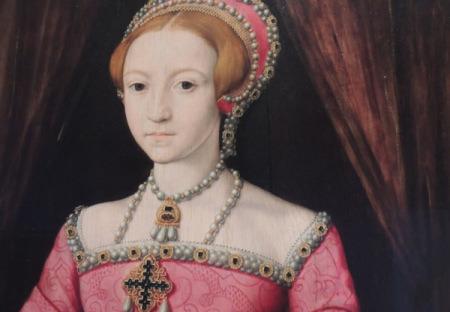
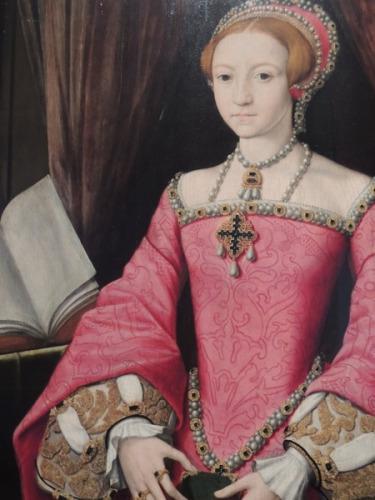
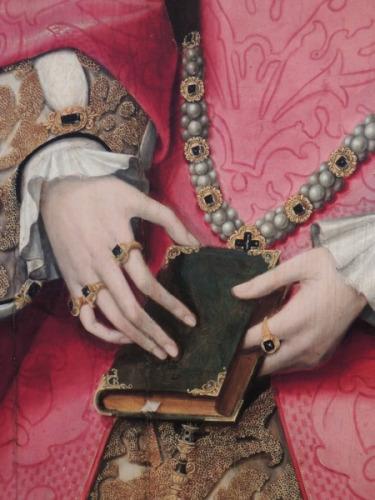
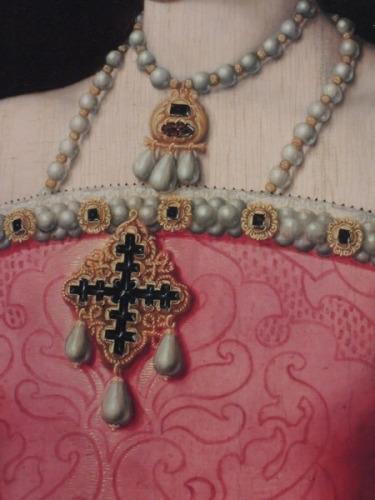
Details from Elizabeth I when a Princess, Attributed to Scrots, c1546. Photos: Melanie Clegg. (I took these pictures at the preview of the In Fine Style exhibition last year before anyone accuses me of rank hypocrisy!)
The Queen’s Drawing Room was perhaps my favorite room in the castle as it houses a really wonderful collection of Tudor and Stuart portraits, including the Scrotes paintings of Edward VI and Princess Elizabeth and the rather more lively Peake the Elder 1605 portrait of Henry, Prince of Wales and his friend over the fireplace.
Although the rest of Catherine of Braganza’s apartments sadly no longer exist as they were removed to make way for the castle library, the tour then continues on to the King’s Dining Room, which lay directly between the royal couple’s apartments and was designed to be used as a shared space by them both as they were in the habit of eating there together. There are even alcoves where servants could await orders and court musicians could entertain them during dinner. The ceiling is one of those amazing Verrios and, suitably, depicts a banquet of the Gods, while over the fireplace there hangs a rather unflattering Jacob Huysmans portrait of Catherine, which depicts her as a shepherdess wearing a rather astonishing pink bonnet.
Oh no, did I say that the Queen’s Drawing Room was my favourite? No, wait, I think it was actually the beautiful pale blue and silver Queen’s Ballroom, which was originally intended as a dancing chamber for Queen Catherine and her ladies and which now houses a collection of exquisite Van Dyck portraits, including the famous paintings depicting the children of Charles I and Henrietta Maria. Back in the day this room was blessed with yet another Verrio ceiling, this time depicting Charles II Giving Freedom to Europe, but this was replaced in the 1830s by a rather less thrilling Wyatville white and gilt ceiling which gives the room an airy, brighter feel. The walls in here are lined with the most beautiful silver furniture and some incredible seventeenth century mirrors in hugely extravagant silver frames, all rare surviving examples of a fashion for silver furniture started by Louis XIV at Versailles. Rare because many original such pieces have long since been melted down, probably to help fund pointless wars. Ahem.
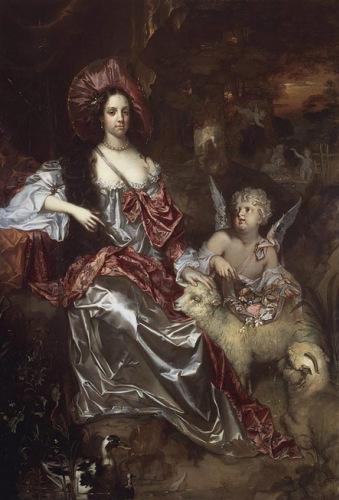
Catherine of Braganza, Jacob Huysmans, c1662-4. Photo: Royal Collection Trust/© Her Majesty Queen Elizabeth II 2014.
After this we took a look at the Queen’s Audience Chamber (which has an amazing Verrio ceiling depicting Catherine of Braganza sitting in a chariot that is being pulled by SWANS towards a temple dedicated to virtue. BY SWANS. EAT YOUR HEARTS OUT, KARDASHIANS.) and her Presence Chamber, which would have formed the most public parts of Queen Catherine’s apartments, which would again, as was the custom, have become increasingly more private and harder to access as you went along. I like to think that I would AT LEAST have made it to the ballroom if not the drawing room, but I expect I’d have been stuck in the Presence Chamber, which was effectively used as a waiting room for people who wanted an audience with the Queen, with all the rest of the rabble.
After all this splendour and opulence, the blinking and dazed visitor then finds themselves back in a distinctly rather more masculine atmosphere when they emerge into the Queen’s Guard Chamber, where there are more displays of arms and armor on the walls, all dominated by a frankly extraordinarily enormous bust of Admiral Nelson, which I think even Lady Hamilton might have balked at having about the place. Or possibly not. It’s HUGE.
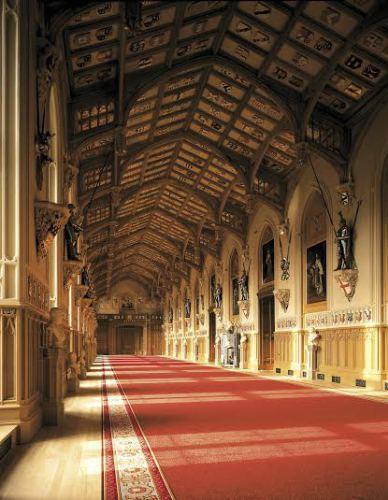
St George’s Hall. Photo: Mark Fiennes.
After this there is the amazing St George’s Hall, perhaps the most famous room inside the castle, which is 55.5 metres long and the location for most of the grand events that take place at the castle, such as state banquets and gatherings of the Knights of the Garter, although as there’s only twenty six of them, I kind of feel like it might be a bit awkward in such a vast space. Maybe that’s just me. It probably is. Anyway, the hall was sadly mostly destroyed by the fire in November 1992 and had to be almost entirely restored, which is why it still looks rather spanky new.
The original ceiling was by Wyatville but they decided not to replace it exactly but instead install an entirely new ceiling with a much more authentic looking hammer beam design, which was constructed using original Medieval techniques and which is the largest timber roof built in the twentieth century. As with St George’s Chapel, the space commemorates the past Knights of the order and their names are inscribed all around the walls, while their shields decorate the ceiling (blank ones denote Knights who were expelled).
Looking rather alarming and poised as if to take flight from the top of the minstrel’s gallery at the far end of the hall there is another mounted coat of armour, this one symbolising the King’s Champion. The armor was originally owned by Sir Christopher Hatton, who was renowned for his amazing dancing at Elizabeth I’s court, but he eventually gave it as a present to her other favourite, Robert Dudley, Earl of Leicester. It was then worn by the King’s champions at the coronations of George I and George II, who I am sure felt just amazing clanking about.
The lantern lobby which follows the hall is another room reconstructed after the 1992 fire and in fact was the room where the fire originally broke out. At the time it was a chapel that had been created for Queen Victoria but it was decided during the renovations that instead it should become a rather elegant gothic yet still light filled lobby that wouldn’t look out of place in one of the beautiful cathedrals that I visited last week and was in fact inspired by Ely Cathedral and an abbey in Portugal.
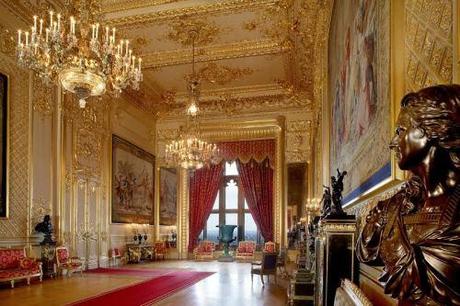
Grand Reception Room. Photo: Peter Smith.
If you have the forethought to visit in the winter then at this point you get to see an incredibly glitzy series of rooms designed by the inimitable Wyatville for George IV in 1820s but as I didn’t, I went straight on to the Grand Reception Room, which is perhaps the most opulent of the suite and the one most evocative of the likes of Versailles and indeed Buckingham Palace. It is absolutely ENCRUSTED with gilt decoration in a very florid rococo style (it is in fact one of the earliest Rococo Revival interiors in England) and lit up with enormous exquisite crystal chandeliers. It was intended by King George to be used as a ballroom and one can only imagine the sumptuous parties that he must have thrown there over the years.
Our wander through the state rooms at an end, we sadly went down the stairs and rejoined the outside world again to poke in the castle shops, take another look at St George’s chapel and stare up at that famous round tower and wonder what Medieval goodies lurk behind its walls. Lots, I expect. We also had the obligatory photo with one of the long suffering guardsmen – my grandfather was a Scots Guard and always claims that he didn’t mind people having their photos taken with him but I think he might be the exception. Not that they can refuse to pose (they’re already posing) or smack us in the face or anything anyway but yes, I always feel a bit bad grinning away next to them. Especially as they have big guns so you don’t really want to mess with them or, y’know, make any sudden moves.
ANYWAY. We thoroughly enjoyed our day at Windsor Castle – the queues looked terrifying on the way in but it was actually a breeze to get inside and really not crowded at all once inside so if you hate crowds (which I really really REALLY do due to Aspergers) then don’t be put off by Windsor Castle’s popularity as there’s plenty of space for everyone. It’s definitely a must see for any history buff as SO MUCH HAPPENED THERE and yes, I can’t believe that it took me so long to see it for myself. I’ll definitely be back in the winter though for a look around those other rooms!
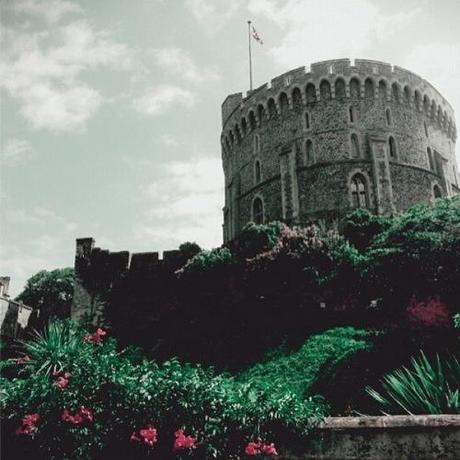
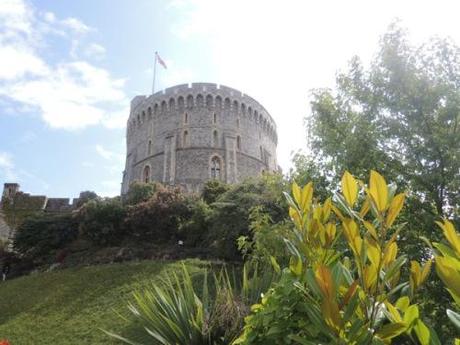
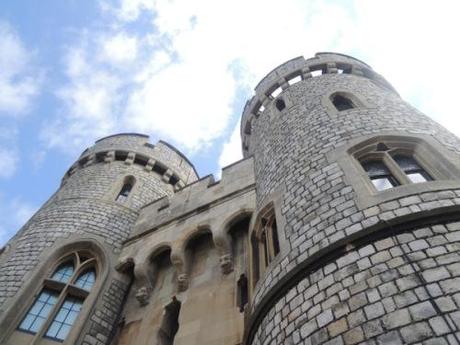
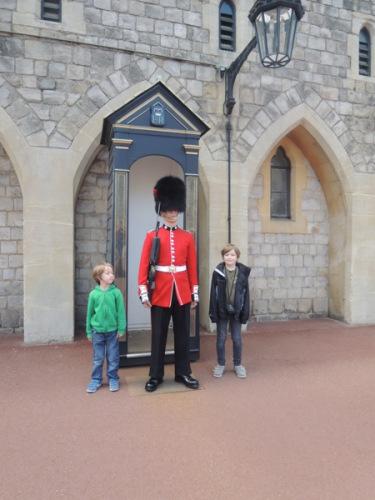
Photos: Melanie Clegg.
Thanks so much to the lovely Hanae at the Royal Collection Press Office for my tickets and some super snazzy pictures of the interior. Thanks!
Now if anyone can arrange a meeting with Aidan Turner, get me up a really high building at night, ship me over to Osborne House and arrange a private performance by The Cure just for me, which were the other biggies on my Things To Do Before I’m Forty List, I reckon I am ready for my birthday. BRING IT ON.
******
Set against the infamous Jack the Ripper murders of autumn 1888 and based on the author’s own family history, From Whitechapel is a dark and sumptuous tale of bittersweet love, friendship, loss and redemption and is available NOW from Amazon UK and Amazon US.
‘Frothy, light hearted, gorgeous. The perfect summer read.’ Minette, my young adult novel of 17th century posh doom and intrigue is now 99p from Amazon UK and 99c from Amazon US. CHEAP AS CHIPS as we like to say in dear old Blighty.
Blood Sisters, my novel of posh doom and iniquity during the French Revolution is just a fiver (offer is UK only sorry!) right now! Just use the clicky box on my blog sidebar to order your copy!
Follow me on Instagram.
